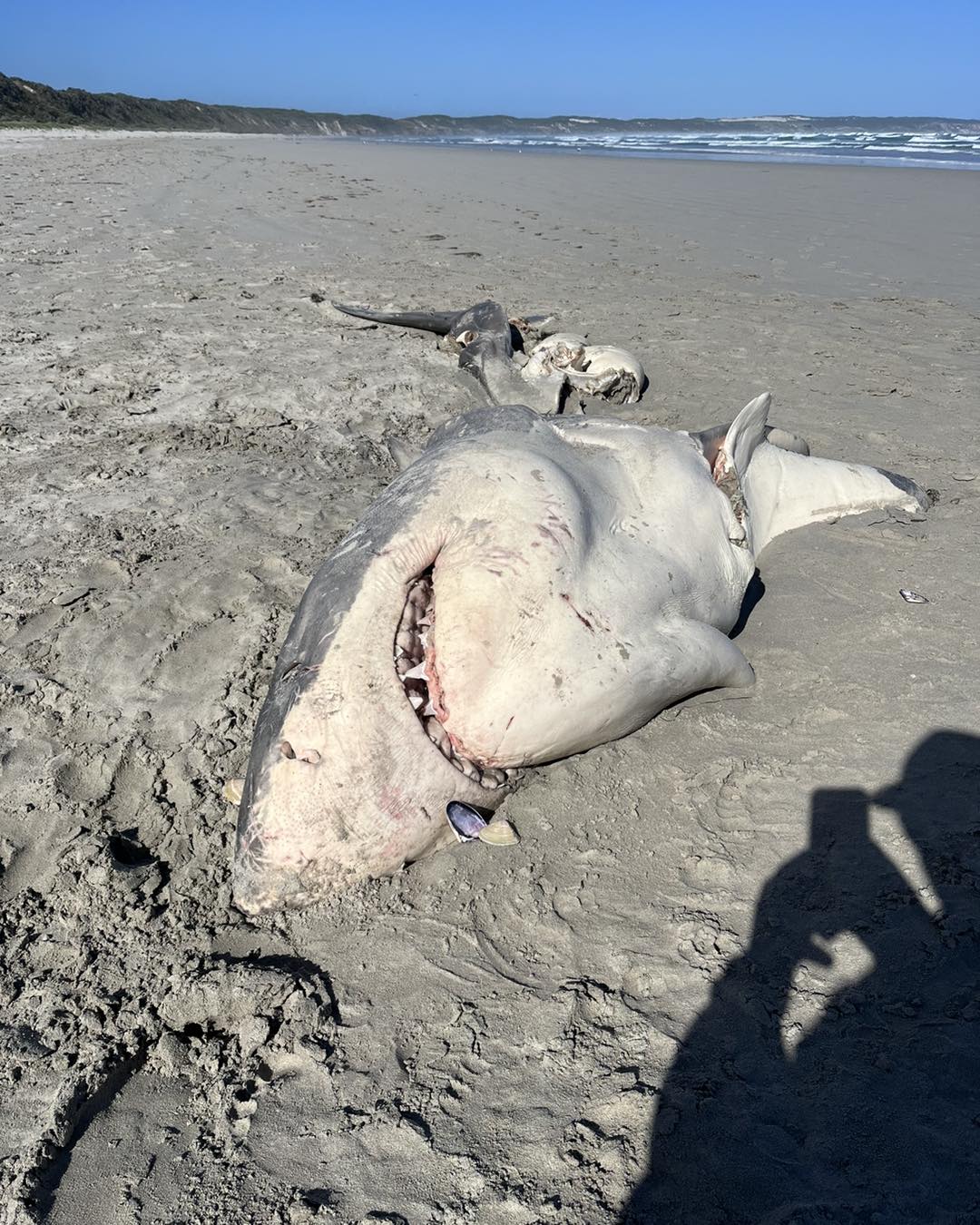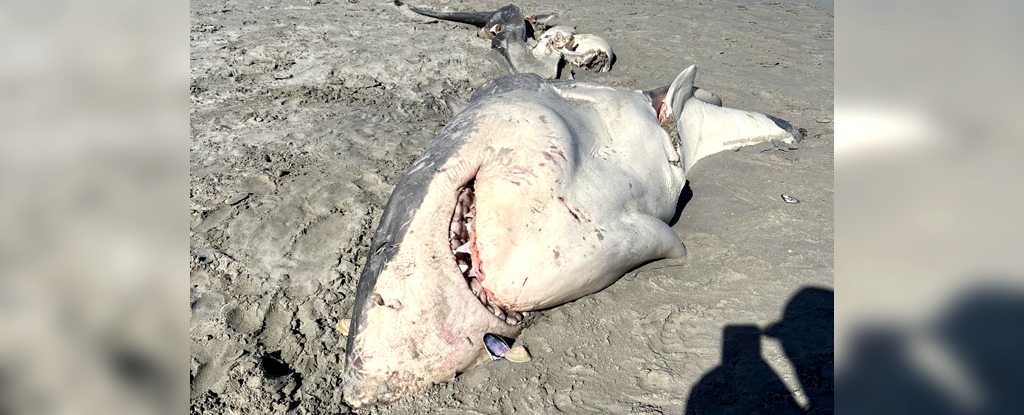Products You May Like
In October, a great white shark washed up on a beach in southern Australia with its insides conspicuously missing.
Large chunks of flesh had been violently ripped from its trunk, but the head, tail, and fins appeared untouched.
Scientists can now confirm what they suspected at the time: that orcas were behind the slaughter of this apex predator.
The bite marks “are quite typical of killer whales,” Adam Miller, an aquatic ecologist at Deakin University, told ABC Radio Melbourne.
His team swabbed the wounds and found they were “loaded with killer whale DNA,” said Miller. “So, it’s a bit of a smoking gun.”
Orcas (Orcinus orca) have been caught making sashimi of great white sharks (Carcharodon carcharias) in South Africa, and have been seen harassing great whites in South Australia, but this is the first evidence of predation in Australian waters, said Miller.
Around seven killer whales were spotted circling the bay in the days before the attack, he said. This included three orcas that could be identified through their distinctive markings as the well-known males Bent, Tip, and Ripple.
The mutilated carcass of the great white shark was found in October near Cape Bridgewater in Victoria. Miller and his team worked with First Nations groups and government authorities to acquire the corpse.

Most of the shark carcass was left to rot because orcas are “really picky eaters”, said Miller. They attack the underbelly of the shark and “effectively suck out the liver”, he said.
Shark livers are fatty, large, and highly nutritious. They are also buoyant, making them an accessible snack for orcas.
Orcas living in Australian waters are known to slurp out the livers of other prey, including blue sharks (Prionace glauca) and shortfin mako sharks (Isurus oxyrinchus).
In South Africa, a pair of serial-killing orcas nicknamed Port and Starboard have terrorized the Gansbaai coast since 2015, disemboweling at least eight great white sharks and causing other sharks to abandon the area.
Great white sharks are a vulnerable species, with a population of only around 300 in Australian waters, said Miller. Orcas are their only known predator.
It’s not known how common such attacks on great white sharks are in Australia, said Miller.
Australia is thought to have two pods of orcas, each containing dozens of individuals.
Orca pods can learn predatory behaviors from each other. “They are incredibly intelligent animals,” he said.
Clever teamwork makes it possible for orcas to hunt some of the largest prey on Earth, including, in at least three instances, adult blue whales.
